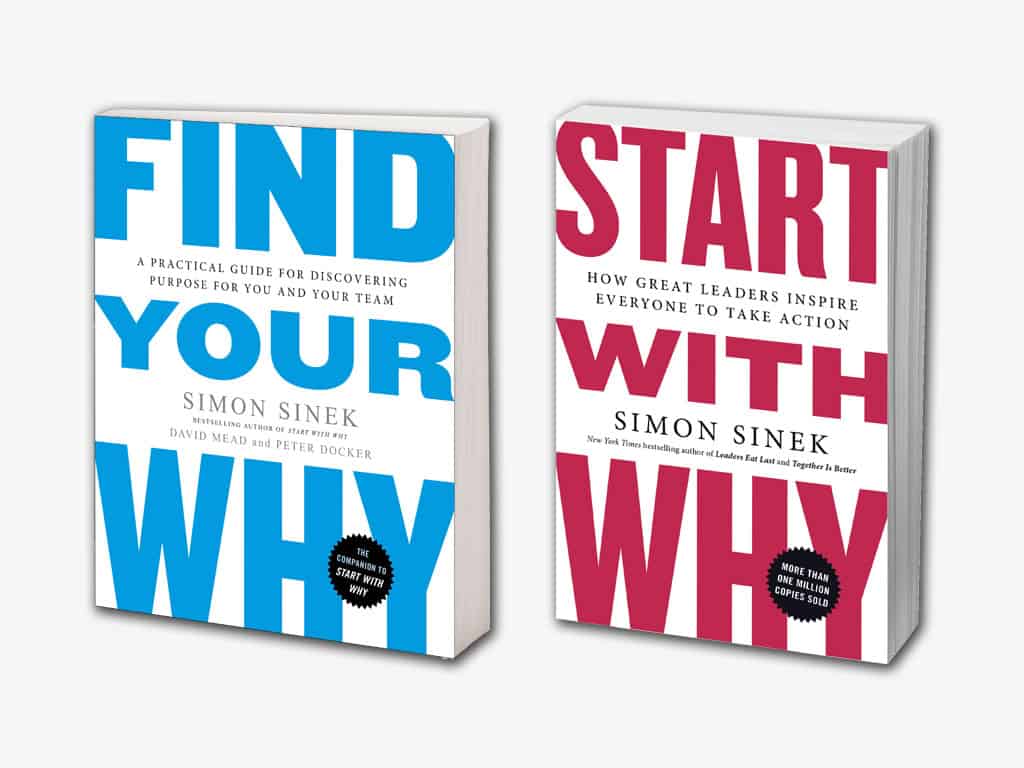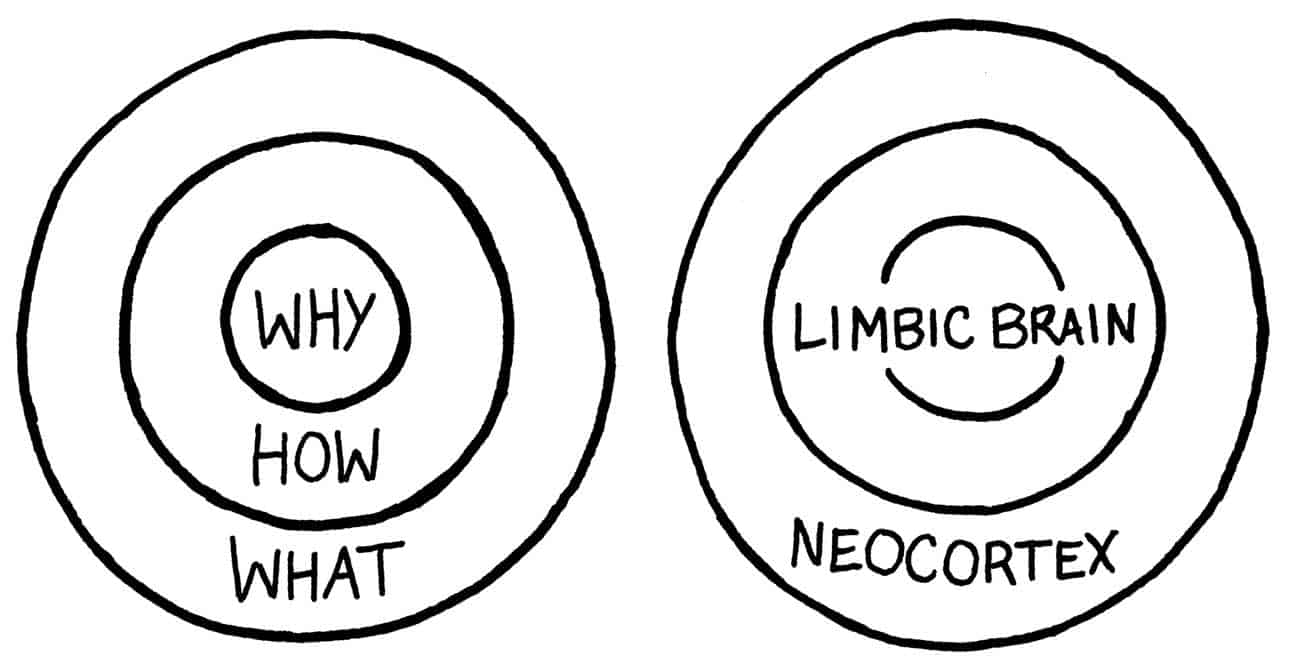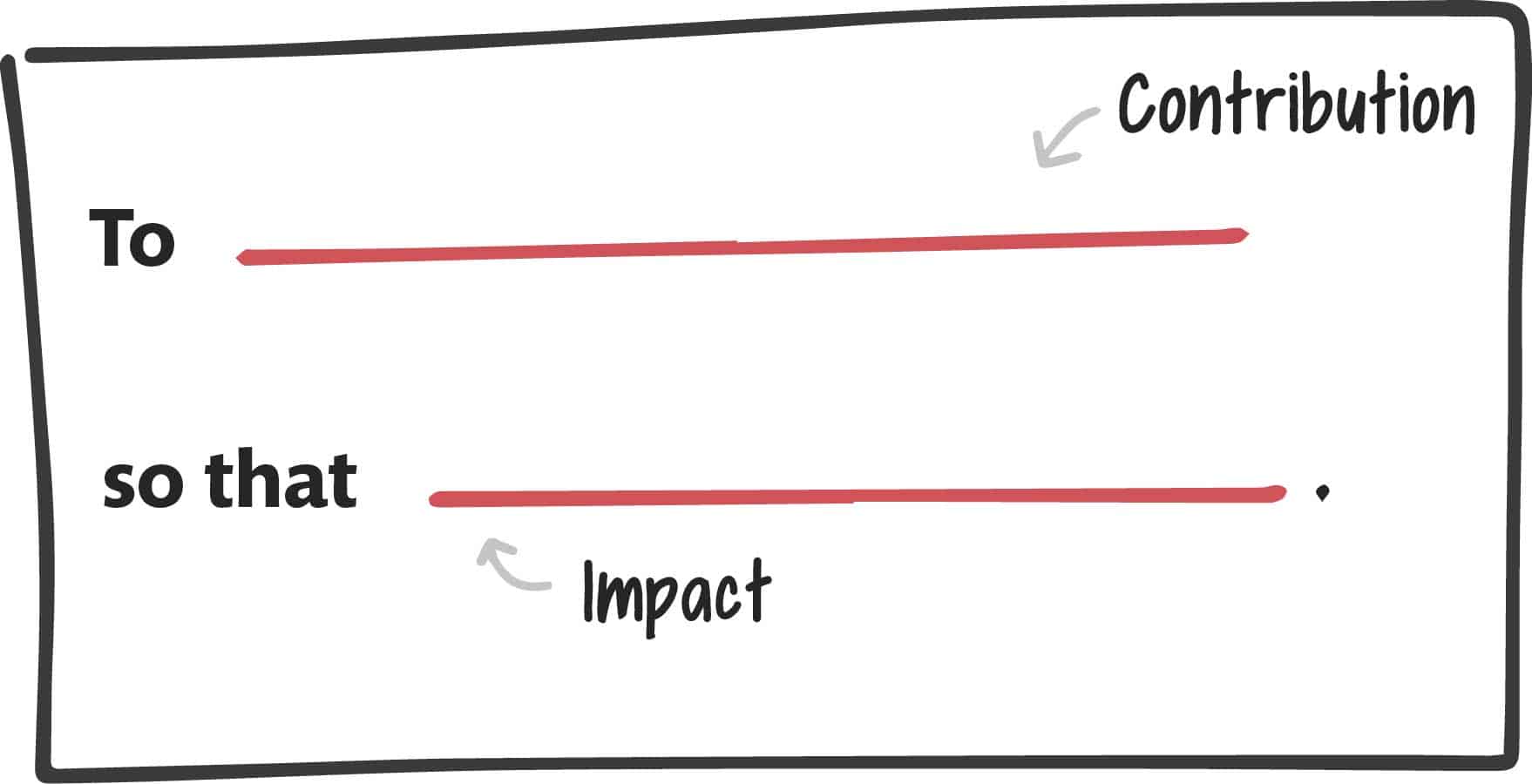
This is a ton of information out there about why purpose is important.
Even on this site, I’ve written many posts about purpose—it’s one of my top five post topics. But, I’ve quickly learned that there is shockingly little out there about how to find and create purpose.
Simon Sinek is attempting to change that.
At the time of this writing, Sinek has the fourth most-viewed TED Talk of all time with 43 million views—it has another 10 million on YouTube. Whether you’ve seen the video before or not, it’s worth rewatching every year:
It’s hard to believe that video is from 2009. In 2011, Sinek would go on to publish the bestselling book Start with Why: How Great Leaders Inspire Everyone to Take Action.
Now, lots of people and businesses are on board with why “why” is important. But, what about how to create “why”?
In 2017, Sinek collaborated with David Mead and Peter Docker to publish the companion to Start With Why—Find Your Why: A Practical Guide for Discovering Purpose for You and Your Team.
This post is a summary of the companion book, Find Your Why. The book tackles finding your why for individuals as well as teams, but I’ve focused my notes here primarily on individual purpose discovery.
All quotes are directly from the book’s authors unless otherwise noted. I’ve added emphasis to some quotes in bold.
Quick Summary of Find Your Why by Simon Sinek, David Mead, and Peter Docker
- “The concept of WHY is a deeply personal journey born out of pain. I discovered the idea at a time when I had lost any passion for my work. The advice people gave me wasn’t helpful either: ‘Do what you love,’ ‘Find your bliss,’ ‘Be passionate.’ All accurate—but totally un-actionable.”
- “That’s the reason this book exists. If Start With Why makes the case for the WHY, Find Your Why provides the steps to show people how to actually do it.”
- “Fulfillment is a right and not a privilege. Every single one of us is entitled to feel fulfilled by the work we do, to wake up feeling inspired to go to work, to feel safe when we’re there and to return home with a sense that we contributed to something larger than ourselves.”
- “Not only did discovering my WHY renew my passion, it gave me a filter to make better decisions. It offered me a new lens through which I would see the world differently.”
- “There is an entire section in the bookshop called ‘self-help,’ but there is no section called ‘help-others.’ This is what we are all doing together—we are pioneering the help-others industry.”
- “Your vision is only actionable if you say it out loud. If you keep it to yourself, it will remain a figment of your imagination.”
- “Every one of us has a WHY, a deep-seated purpose, cause or belief that is the source of our passion and inspiration.”
- “The difference between happiness and fulfillment is the difference between liking something and loving something…Happiness comes from what we do. Fulfillment comes from why we do it.“
- “The happiness in serving ourselves is real but often fleeting; the fulfillment in serving others is lasting. The problem comes when there’s a lack of balance between the pursuit of happiness and the pursuit of fulfillment. That’s not just philosophy; it’s biology.”
A Refresher on Start With Why & the Golden Circle

- “Every organization—and every person’s career—operates on three levels: What we do, how we do it, and why we do it.”
- “And here’s the best part: This is not our opinion. This whole concept of WHY is grounded in the tenets of biology of human decision making. How the Golden Circle works maps perfectly with how our brain works.”
- “The outer section of the Golden Circle—the WHAT—corresponds to the outer section of the brain—the neocortex. This is the part of the brain responsible for rational and analytical thought. It helps us understand facts and figures, features and benefits. The neocortex is also responsible for language.”
- “The middle two sections of the Golden Circle—the WHY and HOW—correspond to the middle section of the brain, the limbic system. This is the part of the brain responsible for all our behavior and decision making. It’s also responsible for all our feelings, like trust and loyalty. But unlike the neocortex, the limbic system has no capacity for language. This is where ‘gut feelings’ come from. It’s not our stomach. It’s a feeling we get about a decision we have to make that we struggle to explain.”
“All three parts are equally important. When those three things are in balance we are at our natural best. We are truly living our WHY.
Our WHY is our purpose, cause or belief—the driving force behind everything we do.
Our HOWs are the actions we take when we are at our natural best to bring our WHY to life.
Our WHATs are the tangible manifestation of our WHY, the actual work we do every day.”
The Individual Why Discovery Process from Find Your Why
“There are three steps to discovering your WHY (tell stories, identify themes, draft the Why Statement). It works best when you complete all three steps in one sitting.”
Step 1: Gather Stories and Share Them
- “Each of us has only one WHY. It’s not a statement about who we aspire to be; it expresses who we are when we are at our natural best.”
- “At its core, the WHY is an origin story. By looking to our past and teasing out the most significant threads—the experiences we’ve had, the people we’ve been influenced by, the lives we’ve touched and the highs and lows we’ve faced—we can identify patterns.”
- “To uncover our WHY we must bring together our standout memories—our defining moments—and examine them to find the connections.”
- “Since your WHY comes from your past, which is the period from your birth until yesterday, you can draw your stories from any time in between those markers.”
- “Discovering your WHY is like panning for gold in the river of the past: the gold is there, lost in the debris of the river, hidden by rushing water. Only when you take the time to pan for the significant moments of the past, retrieving them nugget by nugget, will they turn into treasure.”
- “The goal of the story-gathering exercise is to end up with at least five stories that you consider the most impactful of your life.”
Step 2: Identify Themes
- “As the process unfolds, one or two of those nuggets will seem to shine brighter than all the others. They will feel bigger, more important. They will shine so brightly that you’ll point to them and say, ‘That’s me—that’s who I am,’ or ‘That’s us—that’s our team.’ These themes become the foundation of your Why Statement.”
Step 3: Draft and Refine a Why Statement
- “Try to make yours: simple and clear, actionable, focused on the effect you’ll have on others, and expressed in affirmative language that resonates with you.”
- “One sentence is the absolute lowest common denominator. One sentence is usually more honest. And if you can wrestle your WHY into one sentence, you’re much more likely to remember it—and to act on it.”
- “Eventually, you will put your Why Statement into this format:”

- “The first blank represents the contribution you make to the lives of others. The second blank represents the impact of your contribution.”
- “Often the first draft of a Why Statement sounds a bit generic. While you are sitting with your WHY, try to unpack the words to find language that is more authentic to you, that more completely captures your feelings. We sometimes play a little game with people and ask them if they like the words in their Why Statement enough to have them tattooed on their body. If the answer is no, then you haven’t found the words you ‘love’ and relate to yet. You really want to love the words, especially the words of your contribution.“
Next: State Your HOWs
- “You’ve already laid the groundwork for articulating your HOWs, because they are derived from the themes you listed during the Why Discovery process. The themes that didn’t end up in your Why Statement will serve as the foundation for your HOWs, which take us from theory to practice.”
- “Take your list of themes and cross out the ones you channeled into your Why Statement. Then narrow the remaining list of themes until you have no more than five.”
- “Your HOWs Are Your Strengths“
- “HOWs must be actions because they are the things you do to bring your WHY to life.”
- “Once you’ve stated your HOWs in a simple, actionable way, it’s helpful to add a few bullets to clarify what they mean in practice.”
- “Start using your HOWs as filters for making important decisions.“
- “Remember, HOWs are not aspirational. They do not express who we want to be. They express the ways we actually behave—the things we actually do—when we are at our best.”
Take Inspiration from the WHYs & HOWs of the Authors
Simon Sinek:
- WHY: To inspire people to do the things that inspire them so that, together, we can change our world.
- HOWs:
- Take the unconventional perspective
- See something from a different angle. Open up to doing things a different way.
- Ask, “Is there another, possibly better, way of doing this?”
- Try something. If it doesn’t work, try something else.
- Keep it simple
- When things are simple, everyone can understand. If a ten-year-old can understand what you’re saying, you’re good to go.
- Simple language and simple ideas are easily understood and easier to execute.
- Silver line it
- Find something positive in every situation and in every person.
- Share everything
- Share ideas and feelings. Invite and teach others to share too.
- Share your idea, especially if it’s not perfect. Even the “worst” ideas can be built upon.
- Others won’t know how you feel or what you want until you share it.
- Focus on the long term
- Build something that will outlast every one of us.
- Focus on momentum and trending more than hitting arbitrary numbers and dates.
- Take the unconventional perspective
David Mead:
- WHY: To propel people forward so that they can make their mark on the world.
- HOWs:
- See the big picture
- Take responsibility
- Explore alternative perspectives
- Tie a bow on it (i.e., if you start something, finish it)
- Learn from every experience
Peter Docker:
- WHY: To enable people to be extraordinary so that they can do extraordinary things.
- HOWs:
- Make it simple
- Get up on the balcony (i.e., see the wider context)
- Embrace new ideas
- Build relationships
- Push the boundaries
Interesting Things to Consider in the Why Discovery Process
I truly appreciate that this book is one of the few out there attempting to develop and define a practical process for finding and/or creating life purpose. However, the process felt better designed for businesses/teams than individuals in my opinion—this could be because I spent a decade in business, advertising, and marketing.
The process is designed to do with a partner:
- “A good partner or facilitator. Choose someone who’ll push you to think beyond the surface, to go out of your comfort zone and uncover the memories and experiences that are the source of your WHY. Very likely, it’s your partner or facilitator rather than you who will be able to look down from the perspective of fifty thousand feet and see the themes in your stories.”
- “We see this all the time among people who want to learn their WHY. They think they can play both roles—storyteller and partner. They try to analyze their own stories and identify the themes themselves. We have yet to meet a single person, however, who has successfully done it.” (Note: This could be true for their process outlined here, but there are many roads to creating individual purpose.)
Apparently it can be done in an afternoon (but the refinement can take much longer):
It’s a bit ironic to me that the authors started this book in 2013 but didn’t publish it until 2017. Yet, they seem to think that you can find your purpose in an afternoon. This is part of the reason that I feel it’s better suited for businesses/teams than individuals.
- “Enough time. How long is enough? Hard to say. Most likely, more than six minutes and less than six hours.”
- “There is no shortcut to discovering your WHY. Think of it as working out. The more time you put into it, the more you get out of it. It’s not the kind of thing you can race through.” (Note: I 100% agree with this. I’ve been working on mine for the last 3.5 years.)
- “How much time does it take to hone your Why Statement? We really can’t say because it’s different for everyone. Finding the perfect words for your WHY could take weeks or months.”
Other thought-provoking takeaways:
- “Our WHY is fully formed by our mid- to late-teens.”
- “We don’t have a professional WHY and personal WHY. We are who we are wherever we are.”
- “The WHY is connected to feelings.”
- “The bottom line is your family is not your WHY…Your WHY will come not from talking about your family, but from talking about the feelings your family evokes in you.”
- “Each of us has one WHY and one WHY only.”
That’s it! Have you read Start With Why or Find Your Why? Did you go through the Why Discovery process? If so, please let me know your thoughts in the comments.
You can see all my book summaries here.






